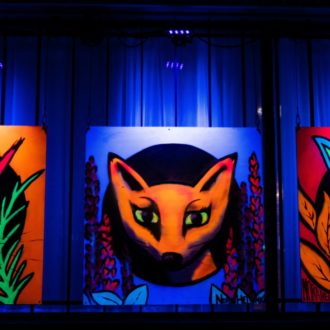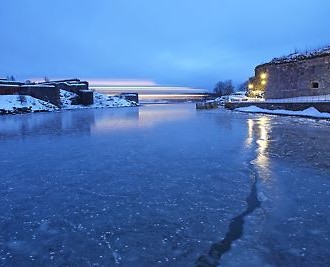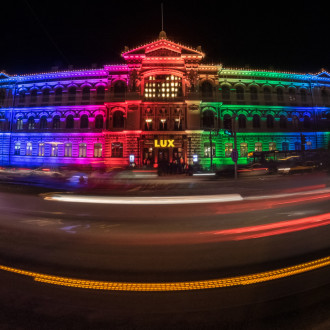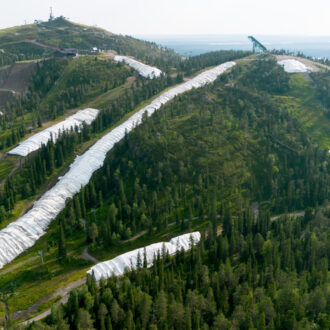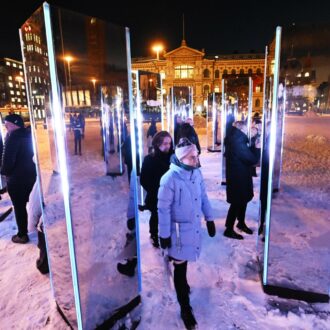Just a few days into the new year and only a couple weeks after the winter solstice, daylight hours are still at a minimum. Lux Helsinki pierces the January night with light installations and luminous outdoor artworks across the city.
For Lux Helsinki 2022, organisers spread installations across the city, providing many entry points to the festival in order to avoid the formation of crowds, so that viewers could maintain social distancing. Light-seekers bundled up to stay warm in bracing temperatures that hovered around minus eight degrees Celsius (17 degrees Fahrenheit) for much of the week.
Most of the installations revved up for five hours each evening starting at five o’clock, for five nights in a row beginning January 5. Several of them also lit up for Lux Morning one day a couple hours before sunrise, which happens at about 9:20 in Helsinki at this time of year (sunset is at about 3:30 pm).
The festival of illumination reminds Helsinkians that they have emerged on the other side of the solstice and the days are already getting longer. Moving through February, day will continue to gain on night, and by late March the light will have a clear upper hand. While the weather often remains chilly throughout April, the already long hours of daylight reassure people that summer is on its way.
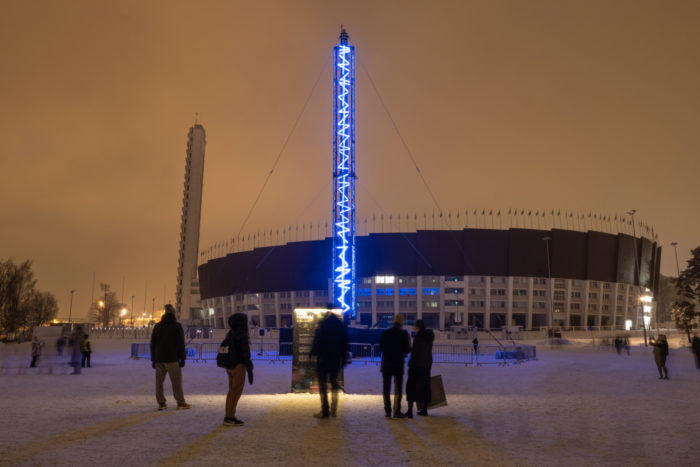
Outside the Olympic Stadium, “Virtaa!” (Current!), by Finnish-Japanese design company Sun Effects, featured a tower of jagged light forming various patterns, accompanied by equally disjointed, electrically buzzing sound effects. Photo: Tim Bird
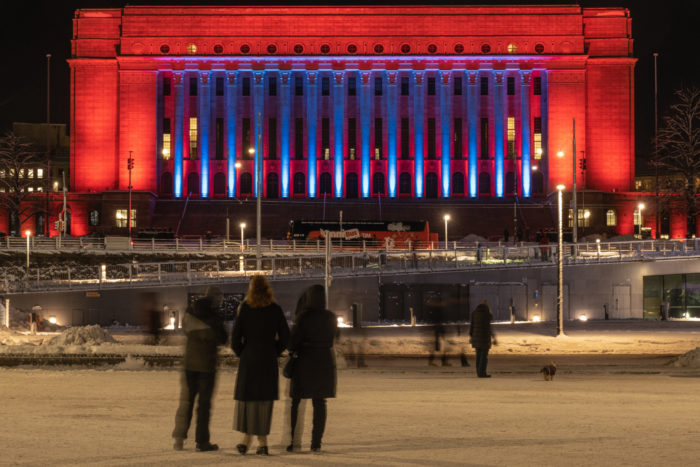
Lux Helsinki organisers designed the changing colour combinations that illuminated the façade of the Parliament building. Photo: Tim Bird
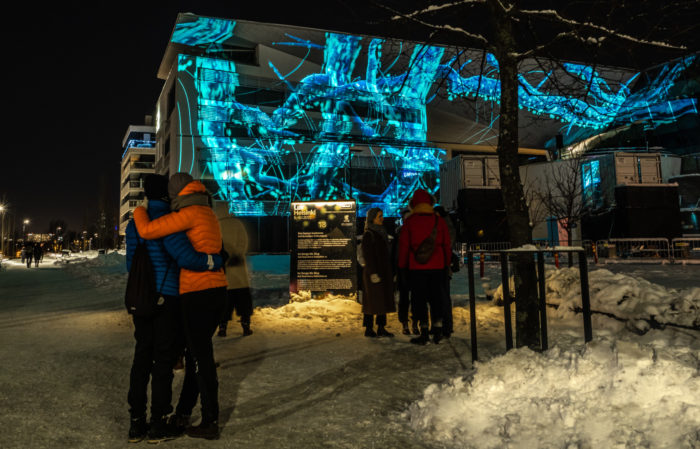
The Soil Searchers Collective, made up of artists, musicians and scientists, created the 3D video projection “Its Songs We Sing,” representing the fungal networks and diverse biological universe that exist among forest root systems. Photo: Tim Bird
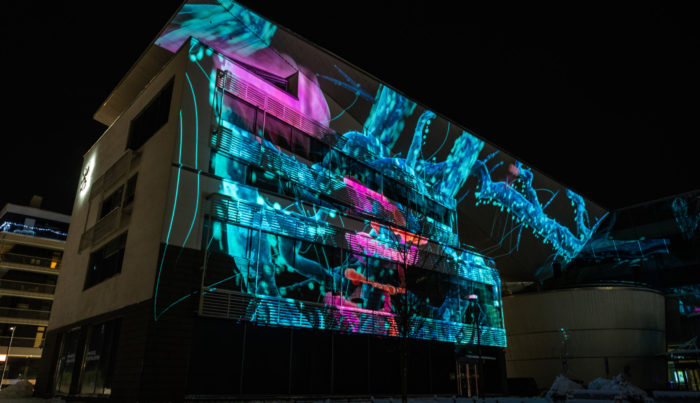
Understanding the microbes of the subterranean ecosystem depicted in “Its Songs We Sing” is more essential to the future of humanity than most people realise. Photo: Tim Bird
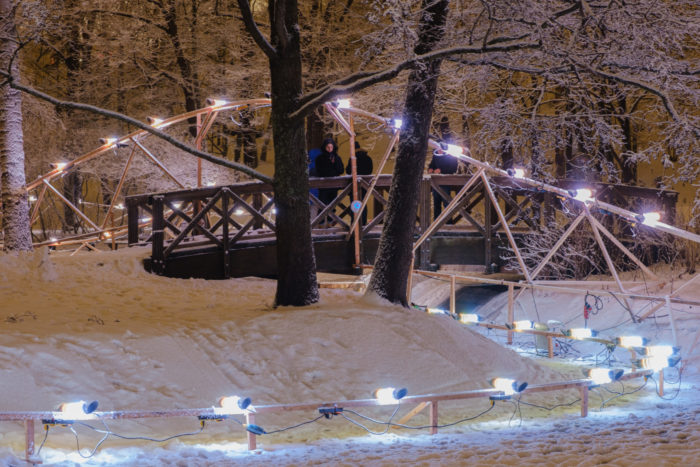
In Alppipuisto, a park bordered by railroad tracks on one side and the rollercoasters of Linnanmäki Amusement Park on another, Dutch artist Gijs van Bon’s “Ping” combined lamps and sounds to give the impression that colourful lights were zooming back and forth along a track in the woods. Photo: Tim Bird
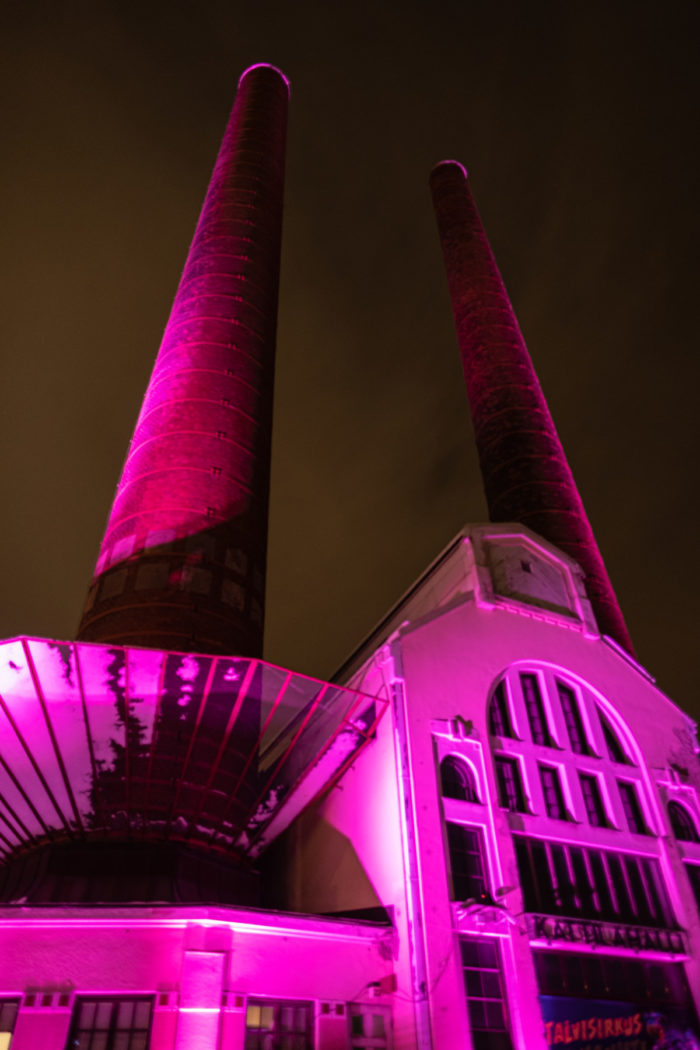
Ainu Palmu’s “Pink Caravan” tints the former industrial area of Suvilahti, giving it a new kind of power and attraction. Photo: Tim Bird

“Falin Mynd,” by fuse*, an Italian multidisciplinary art studio, forms an abstract digital landscape based on real-time tweets and social media hashtags related to Helsinki. Photo: Tim Bird
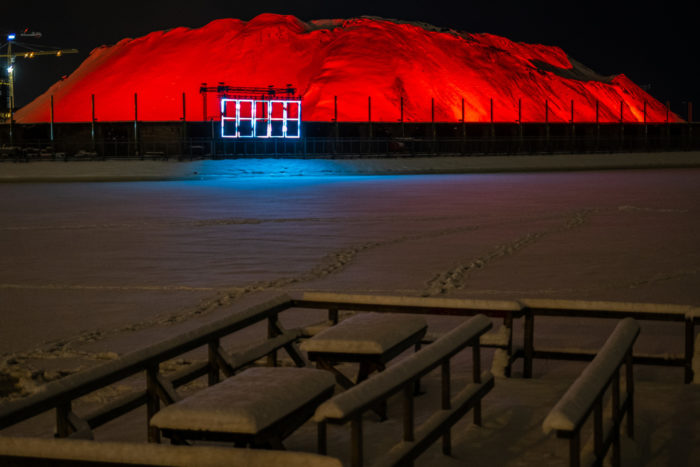
“Happi” (Oxygen), by Jani Vuorinen’s Lighting Design Collective, lit up a snow-covered mountain of fuel at Hanasaari’s coal-burning power plant, which is to be decommissioned in 2023, helping Finland achieve its ambitious 2035 climate goals. Photo: Tim Bird
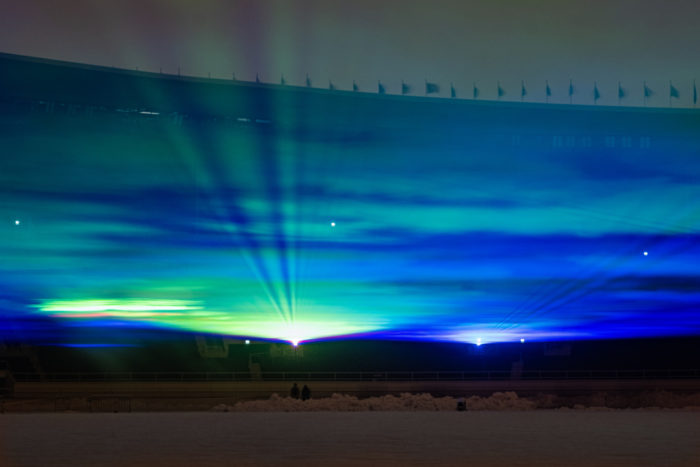
“Borealis” projected beams of light across rising machine-generated fog to create something like the Northern Lights above the Olympic Stadium’s football field. Photo: Tim Bird
“Pixels,” by light artist Otso Vartiainen, sent streaks of red and other colours up and down the wide corner windows of the Forum shopping centre downtown. Photo: Tim Bird
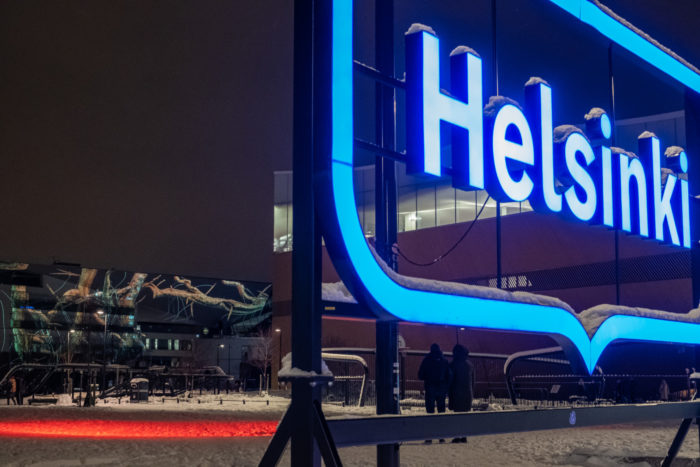
The landmark Helsinki sign outside of Oodi, the famous main library, glowed as the Soil Searchers Collective’s 3D video “Its Songs We Sing” covered a building in the background. Photo: Tim Bird
Photos by Tim Bird, January 2022
Text by Peter Marten
